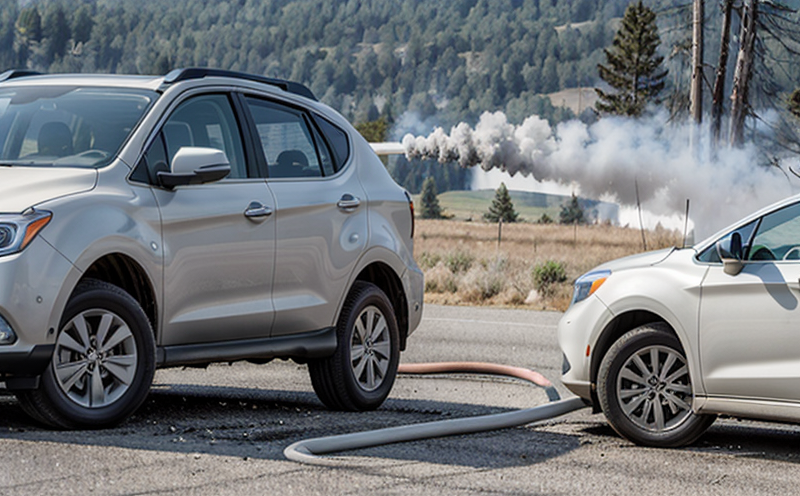Toxic Gas Emission Assessment During Upholstery Combustion
Understanding and mitigating the risks associated with toxic gas emissions during upholstery combustion is crucial in ensuring fire safety compliance and occupant protection. This service focuses on assessing the levels of harmful gases released when upholstered materials ignite, providing insights into material composition and design choices that impact toxicity.
The process involves controlled laboratory testing where a standardized sample of the upholstery material is subjected to combustion conditions replicating real-world scenarios such as those found in residential or commercial settings. The test apparatus captures and analyzes gases like carbon monoxide (CO), nitrogen dioxide (NO2), hydrogen cyanide (HCN), and other potentially harmful compounds.
The testing methodology adheres to international standards, including ISO 13919-1:2018, which specifies the procedure for measuring smoke density and toxic gas emissions from upholstered furniture during combustion. This ensures that the results are comparable across different laboratories and jurisdictions worldwide.
During specimen preparation, it is essential to select a representative sample that accurately reflects the characteristics of the upholstery being tested. Factors such as fabric type, foam composition, and overall construction influence the test outcomes. The sample is carefully prepared to ensure consistency with industry standards, minimizing any potential variability in results.
The testing apparatus used in this service includes sophisticated instrumentation designed to capture both visible smoke density and the specific toxic gases emitted during combustion. These instruments are calibrated regularly to maintain accuracy and reliability. The data collected from these tests is then analyzed using advanced software that interprets the results according to predefined acceptance criteria.
By adhering strictly to international standards, this service ensures that the test results are not only accurate but also universally recognized by regulatory bodies and stakeholders within the industry. This level of compliance is critical for manufacturers seeking to ensure their products meet safety requirements while maintaining a competitive edge in the market.
- The use of ISO 13919-1:2018 ensures that testing methods are consistent with global best practices.
- Advanced instrumentation guarantees precise measurement of smoke density and toxic gas emissions.
- Regular calibration of equipment ensures ongoing accuracy in test results.
Industry Applications
This service has broad applications across various sectors including furniture manufacturing, automotive interiors, and residential construction. By providing detailed insights into the toxic gas emissions from upholstery materials, this service helps manufacturers identify areas for improvement in material selection and design.
For quality managers and compliance officers, understanding these emissions is vital to ensuring products meet stringent safety regulations. This knowledge can also inform product development efforts aimed at creating safer environments both during fire emergencies and under normal operating conditions.
In the realm of research and development (R&D), this service offers valuable data points that can guide innovation towards more environmentally friendly and safer upholstery materials. For procurement teams, it provides objective criteria for evaluating suppliers based on their ability to deliver compliant products consistently.
Customer Impact and Satisfaction
Our clients benefit significantly from this service by gaining actionable insights into the safety aspects of their products. This information allows them to make informed decisions about material changes that could reduce risks associated with toxic gas emissions.
Customers report higher levels of satisfaction knowing they are producing safer products compliant with international standards. Additionally, having access to detailed reports helps them demonstrate due diligence in meeting regulatory requirements, which can be crucial for avoiding costly penalties or recalls.
Competitive Advantage and Market Impact
- Leadership in compliance with international standards enhances brand reputation among consumers who value safety.
- Proactive approach to identifying potential hazards allows companies to stay ahead of regulatory changes.
- Access to comprehensive data supports strategic decision-making regarding product development and supplier selection.





